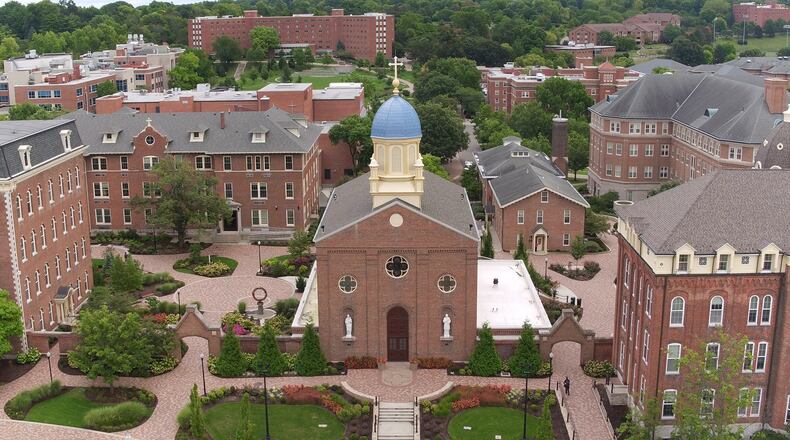It’s too early to say what the effect on jobs might be, according to a statement to the Dayton Daily News from Andy Horner, executive vice president for business and administrative services. But with the scope of changes that will be considered, he said on Saturday it’s likely to lead to “some realignments of both faculty and staff positions.”
“One of the principles that the university will endeavor to follow would be for any changes in employment levels to be accomplished primarily through natural attrition, retirements and employee turnover,” Horner said. “Our overarching goal is to ensure a high-quality University of Dayton education for current and future students and continue to live our mission in service to others, while remaining financially strong.”
The university didn’t say how much money it was aiming to save through these changes.
“We have already made cuts around the edges,” Horner said. “This initiative is aimed at identifying structural changes to university operations and programs that will ensure our revenues exceed expenses by healthy and sustainable margins over the long term.”
UD increased financial aid to new and continuing students during the pandemic. The coronavirus also affected its international student enrollment, the university said.
“We have been able to achieve positive financial results by curbing spending across the university and employing other short-term tactics,” Spina said. “However, this approach will not create the kind of transformational change that will ensure and sustain the long-term health and quality of the university.”
The University of Dayton employs 2,797 full-time employees and 1,091 part-time employees. It is one of the largest employers in the region.
Spina said in his message that changes to the following would be considered, as well as other ideas once the campus community and leadership had been consulted:
- Reducing the number of academic programs.
- The optimal size of the student body and housing requirements.
- Instructional standards, including section sizes and class enrollments.
- Operational efficiencies, such as shared administrative support and financial management.
- Continued effective stewardship of funds.
No decisions have been made. These are some of the items for initial study, Spina said in his message, and the school’s Committee on Sustainable Institutional Transformation — made up of administrators, faculty and trustees — will evaluate all ideas.
Implementation of any changes would begin in the 2023 fiscal year budget.
“The university is strong financially, and we are undertaking this process as a way to protect the financial health and quality of a UD education,” Spina said.
Spina emphasized this effort would have minimal, if any, impact on students and their families. While it has not made a final count of students, it predicts record-high enrollment of about 12,000 students this year, up about 3% from last fall.
The university is clear-eyed about the challenges it faces, Spina said.
“We will follow the lead of our Marianist founders and take bold, decisive action to maintain a high-quality University of Dayton education for current and future students and continue to live our mission in service to others, while remaining financially strong,” Spina said. “The path we chart will enable the university to wisely adjust to these circumstances and control our own destiny in a rapidly changing world.”
Joel Pruce, an associate professor of human rights studies, said a large group of faculty met virtually with university administrators Friday afternoon to discuss the changes.
Pruce noted that in the fall of 2019, UD was already strained financially and at that point, UD administrators started the budget initiative. The COVID-19 pandemic interrupted it, but administrators are now renewing it.
In the meeting, Pruce said administrators discussed stressors to UD’s financial health in the medium term, which included changes in demographics in enrollment.
Pruce said he wants to see more members of the faculty on the committee. Right now, he said, four of the 15 to 20 people on the committee are faculty members.
“Faculty have to be fairly and rightfully represented on that committee, because we do the work, the everyday work, of the university — and that is to teach our students,” Pruce said.
About the Author

